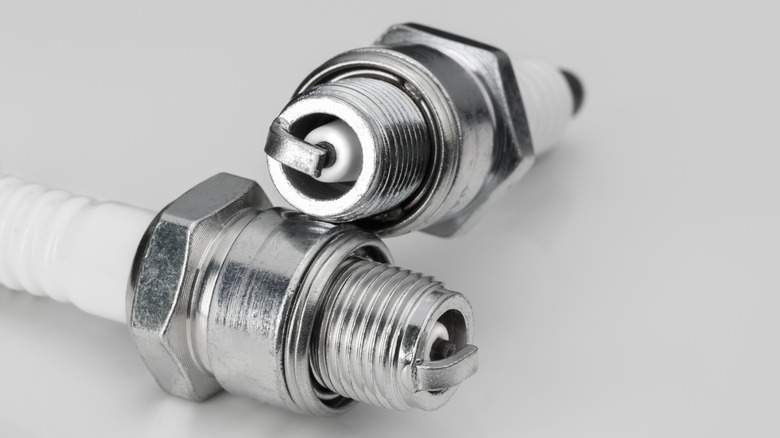The rate at which a spark plug wears out will vary depending on the make and model of the vehicle, the type of engine, driving conditions, and spark plug type. Engines with copper spark plugs typically need a new set after 20,000 to 30,000 miles, whereas a comparable engine with iridium plugs won’t need a new set until after 80,000 to well over 100,000 miles. The primary differences between copper and iridium spark plugs are price and longevity, which is why reading the owner’s manual reveals the definitive answer to how often spark plugs need to be replaced.
Not only that, but spark plugs come in hot or cold variants. The optimal firing temperature is between 932°F and 1472°F, and anything outside of that range will affect performance, fuel economy, engine service life, and spark plug wear rates. Modern spark plugs use rare metals like iridium or platinum to improve durability, but they eventually wear out and need periodic replacement. Although spark plugs are designed to survive intense heat and pressure, they can fail sooner than expected from overheating or carbon buildup.
Yes, a spark plug can overheat with the engine if there’s a leaky head gasket or a severe lack of coolant. It can also get scorching hot if the engine is working harder than usual — if the motor is too fouled up with carbon deposits, if the ignition timing is slightly over-advanced, if the air-fuel ratio is too lean, or if the engine is forced to run on low-octane gas. Meanwhile, late ignition timing, a rich air-fuel mixture, deteriorated ignition components, and worn piston rings can cause carbon fouling on the spark plugs and make them wear out sooner rather than later.
Signs and symptoms of worn spark plugs
Since spark plugs essentially bring life to internal combustion, your car will exhibit some unusual signs if they begin to wear down. It could start misfiring or idle roughly, and a disrupted firing order can even make the vehicle jerk annoyingly while driving.
In some cases, a faulty spark plug can trigger fault codes and a check engine light, or it may cause the maintenance reminder to illuminate for upcoming servicing. Other things to watch out for are poor fuel economy, a hard-starting motor (or a no-start condition), poor acceleration, or a general lack of oomph from an otherwise peppy motor.
In a way, spark plugs are like windows into your car’s soul, and their condition can give you a good idea of the engine’s overall health and reliability. After you unscrew the spark plugs from the cylinder head, take a closer look at the firing tip. Brownish or light gray residue is typically a good indicator of healthy combustion, but anything other than that could mean repairs are on the horizon. For instance, glazed or glossy tips point to overheating, while a drop in the plug’s insulator resistance can lead to wet or dry carbon fouling.
One of the biggest mistakes you can make is waiting for something to go wrong. Waiting for a year before changing the oil is like signing a death sentence for your engine, since sludge can kill it much faster than you’d expect. The same applies to the spark plugs. Not replacing them periodically will force the engine and electricals to work harder than they should, and you don’t want that if you’re looking to save money on repairs and keep your car in optimal condition.


